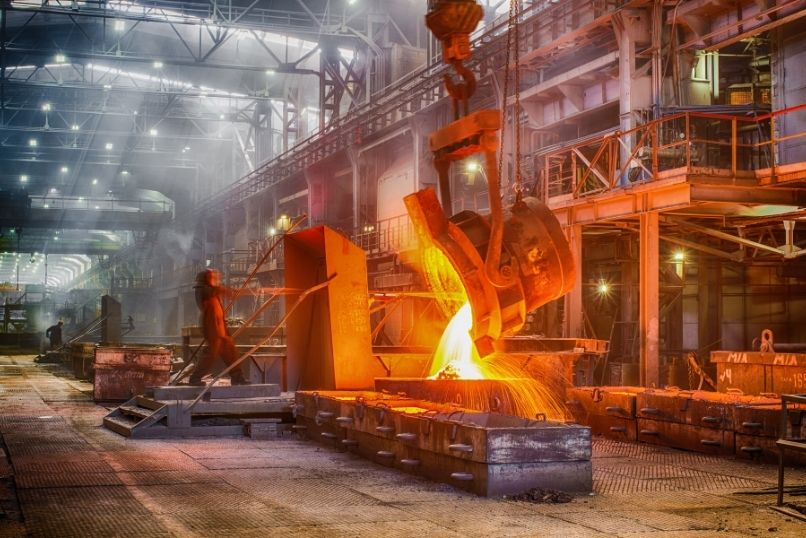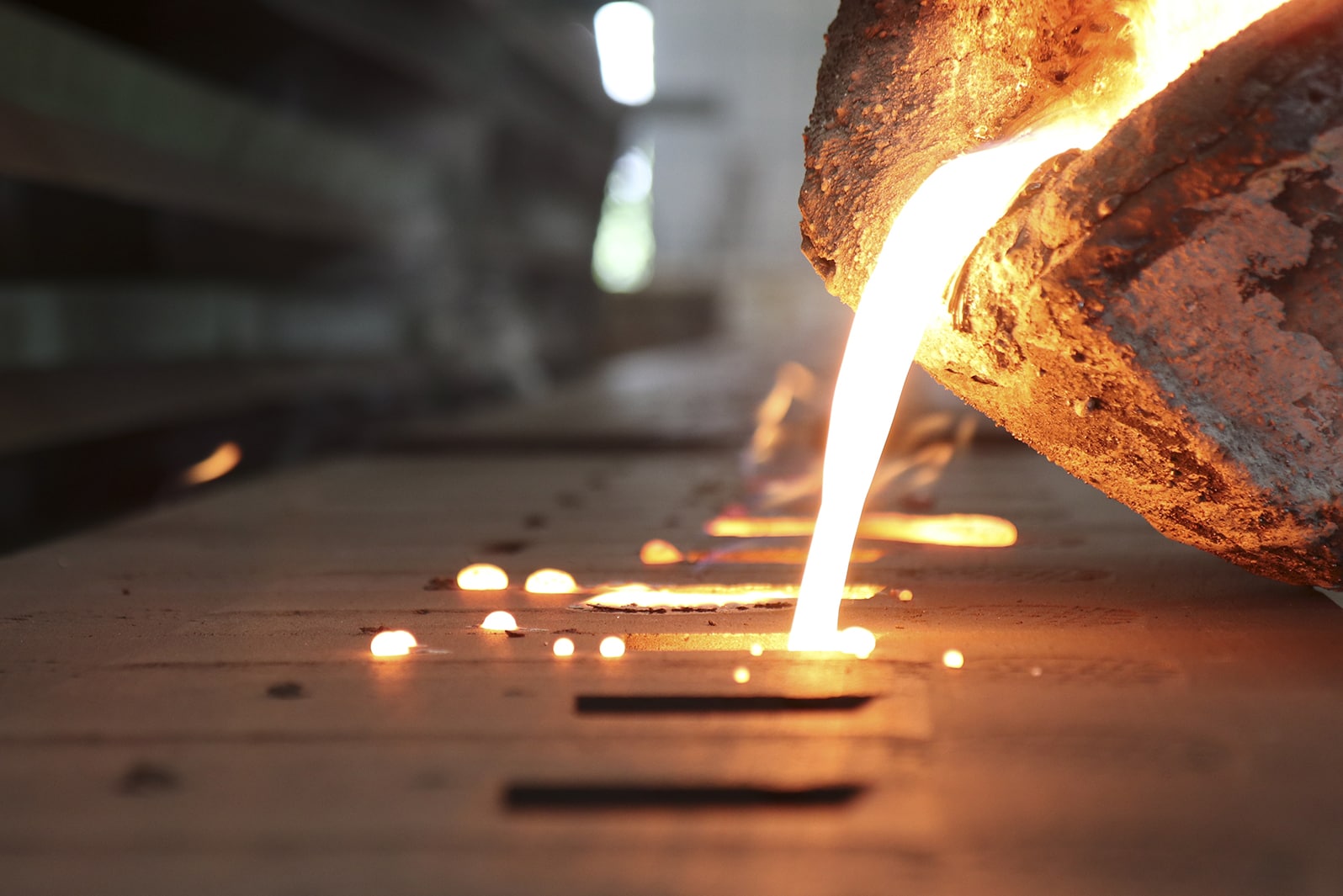A Deep Study the Different Types of Metal Casting and Their Uses
Metal Casting encompasses numerous techniques, each tailored for certain applications and demands. From the cost-efficient sand casting technique to the precision of financial investment casting, each process has special benefits. Pass away casting stands out in high-volume manufacturing situations, while shed foam casting presents innovative layout possibilities. In addition, long-term mold and mildew casting is recognized for its resilience. Understanding these methods opens a home window right into their functional uses and effects in numerous industries. What exists under the surface of these casting methods?
Sand Casting: A Cost-efficient and flexible Method
Although different casting techniques exist, sand spreading stays one of one of the most functional and cost-efficient strategies in the metalworking industry. This technique employs a combination of sand and a binding representative to create mold and mildews, permitting the production of parts in diverse shapes and sizes. Sand casting is especially useful for little to tool manufacturing runs, as it calls for marginal ahead of time investment in tooling contrasted to various other spreading methods.
The procedure starts with the development of a mold, where liquified steel is poured in to develop the desired item as soon as cooled down. Its adaptability allows using numerous steels, consisting of steel, aluminum, and iron. Furthermore, sand spreading can suit complicated geometries, making it ideal for a series of applications, from vehicle parts to intricate imaginative items. In general, sand spreading's performance and adaptability solidify its relevance in the production landscape.
Investment Spreading: Accuracy and Information for Complex Forms
Financial investment spreading attracts attention as a technique renowned for its ability to generate highly described and complex elements. This process involves creating a wax pattern that is coated with a ceramic covering, which is then heated to eliminate the wax and solidify the shell. The result is a precise mold and mildew that can record intricate geometric forms with impressive precision.
This spreading strategy is specifically helpful for producing get rid of slim walls, great features, and limited resistances, making it ideal for sectors such as aerospace, vehicle, and medical devices. Investment casting suits a variety of steels, consisting of stainless-steel, aluminum, and titanium, allowing suppliers to satisfy particular material needs.
Furthermore, the process reduces machining needs post-casting, which can boost efficiency and decrease manufacturing costs. Generally, financial investment casting is a favored option for applications where accuracy and information are paramount.
Pass Away Spreading: High-Volume Manufacturing With Excellent Surface Area Complete

Die spreading is a very efficient manufacturing process that masters producing huge volumes of metal get rid of exceptional surface finishes. This method involves requiring molten metal into a mold and mildew tooth cavity under high stress, permitting quick manufacturing cycles and harmony in the ended up items. Generally made use of materials consist of magnesium, aluminum, and zinc, which use excellent mechanical homes and rust resistance.
Die spreading is specifically beneficial for sectors such as vehicle, electronics, and consumer items, where precision and top quality are paramount. The process makes it possible for intricate styles, reducing the requirement for extra machining and completing procedures. In addition, the smooth surfaces produced with die casting commonly require marginal post-processing, resulting in lower total production prices. As a high-volume manufacturing technique, pass away spreading is optimal for producers seeking effectiveness without endangering on top quality, making it a preferred choice for many applications throughout numerous markets.
Lost Foam Spreading: Cutting-edge Approach for Intricate Styles
Lost foam useful link casting reinvents the manufacturing of complex metal parts by utilizing an unique procedure that removes the need for typical mold and mildews. Instead of traditional mold-making, this method employs a foam pattern that is covered with a refractory material. As soon as the pattern is established, liquified metal is put directly into the mold and mildew, creating the foam to leave and vaporize behind a specific cavity for the steel to fill up. This innovative strategy enables for complex styles and thorough features that may be testing to attain with other casting approaches.
Additionally, shed foam casting can decrease waste and energy intake, making it an eco-friendly option. Industries such as automotive and aerospace benefit greatly from this strategy, as it sustains my website the production of lightweight components with complex geometries. On the whole, lost foam casting attracts attention for its capability to deliver high-grade, tailored metal parts successfully.
Irreversible Mold Casting: Longevity and Consistency in Steel Components
Long-term mold casting is an extremely reliable method for creating long lasting and regular metal components, leveraging recyclable molds that are normally made from metals such as iron or steel. This spreading process involves putting molten metal into these mold and mildews, which are preheated to boost item high quality and lower flaws. Making use of multiple-use molds not only decreases waste yet likewise permits higher manufacturing rates, making it economically helpful for producers.
The resulting elements exhibit exceptional dimensional accuracy and surface finish, making them perfect for applications in vehicle, aerospace, and industrial machinery. In addition, permanent mold spreading can suit a selection of alloys, better increasing its flexibility. The resilience of the actors parts is improved because of the controlled cooling prices that advertise better grain frameworks. In general, this spreading strategy sticks out for its capability to produce top notch steel components that satisfy extensive efficiency requirements, ensuring reliability popular environments.
Often Asked Inquiries
What Materials Can Be Used in Various Steel Casting Procedures?

Numerous products can be made use of in Metal Casting processes, including aluminum, iron, zinc, and bronze. Each product supplies one-of-a-kind properties, affecting the spreading method's efficiency, strength, and suitability for various applications in production.
How Do Casting Techniques Influence the Mechanical Properties of Metals?
Casting approaches significantly influence the mechanical homes of steels, influencing elements like ductility, firmness, and strength. Variants in cooling down prices and mold materials can cause various microstructures, ultimately impacting the efficiency of the end product.
What Are the Ecological Effects of Steel Casting Processes?
Metal Casting processes can lead to air and water pollution, resource exhaustion, you could look here and considerable power consumption (Wisconsin Aluminum Foundry). In addition, the generation of waste materials and greenhouse gas emissions significantly contributes and influences the environment to climate modification
Exactly how Do You Pick the Right Spreading Approach for a Project?
Selecting the appropriate casting technique involves examining project demands, product residential or commercial properties, intricacy, and manufacturing quantity. Aspects like expense performance, surface high quality, and lead time likewise play essential functions in determining one of the most ideal technique.
What Safety Safety Measures Should Be Taken Throughout Metal Casting Workflow?
During Metal Casting operations, safety and security preventative measures consist of using safety gear, ensuring appropriate air flow, carrying out devices examinations, preserving a tidy work space, and having emergency situation methods in position to deal with possible threats like burns or poisonous fumes.
From the cost-effective sand spreading approach to the precision of investment spreading, each process has one-of-a-kind benefits. Pass away casting is a highly efficient production procedure that stands out in generating huge volumes of metal components with outstanding surface finishes. Lost foam spreading revolutionizes the manufacturing of intricate steel components by making use of a distinct process that gets rid of the requirement for standard molds (Aluminum Castings). Long-term mold spreading is a very effective technique for generating sturdy and consistent metal components, leveraging recyclable mold and mildews that are commonly made from steels such as iron or steel. Numerous materials can be utilized in Metal Casting processes, including light weight aluminum, iron, bronze, and zinc